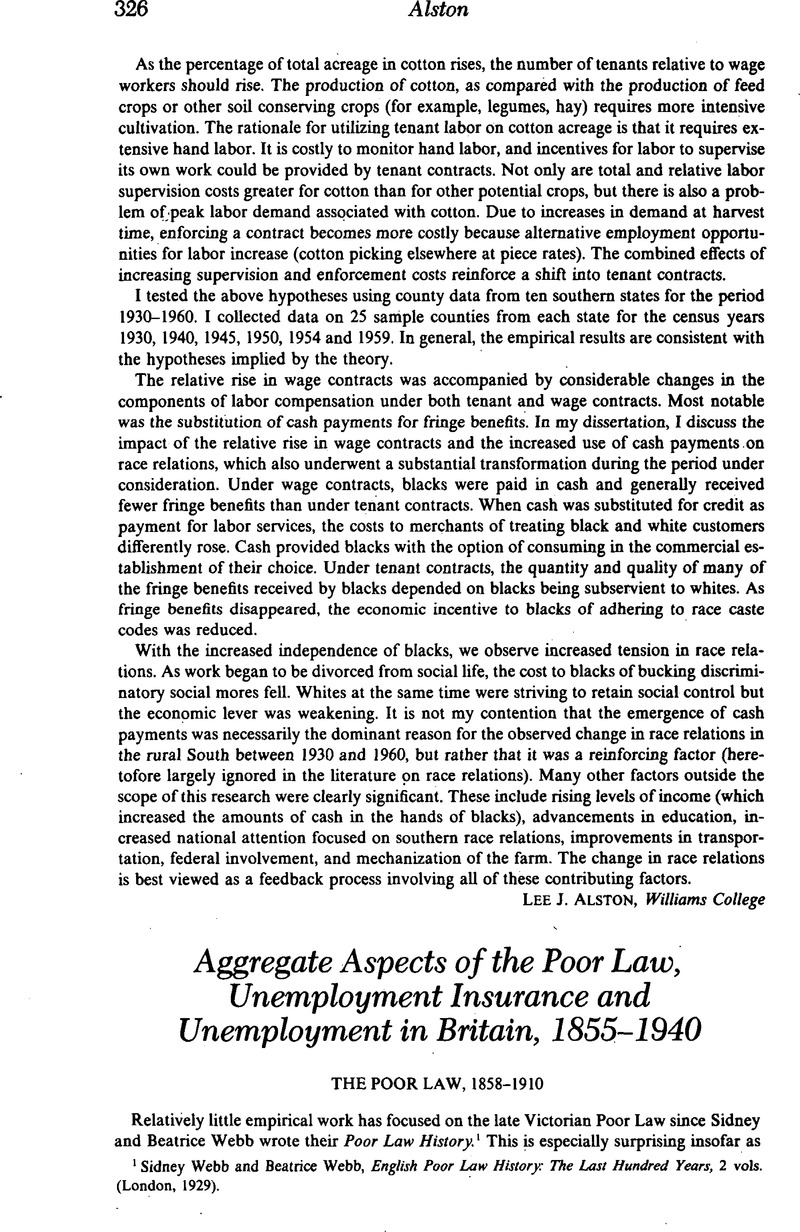Article contents
Aggregate Aspects of the Poor Law, Unemployment Insurance and Unemployment in Britain, 1855–1940
Published online by Cambridge University Press: 11 May 2010
Abstract

- Type
- Summaries of Doctoral Dissertations
- Information
- Copyright
- Copyright © The Economic History Association 1979
References
1 Webb, Sidney and Webb, Beatrice, English Poor Law History: The Last Hundred Years, 2 vols. (London, 1929).Google Scholar
2 A more complete discussion of these and several related issues may be found in Easton, Stephen T., “Aggregate Aspects of the Poor Law, Unemployment Insurance and Unemployment in Britain from 1855-1910,” PhD. dissertation, University of Chicago, 03 1978.Google Scholar
3 See Easton cited above for a complete description of the data and their construction.
4 This is surprising insofar as the unemployment rate during this period was constructed from the select group of trade unions which had their own unemployment insurance. These relatively well-off workers were not as likely to be associated with the Poor Law as were others in the population at large.
5 Briefly, the unemployment rate is written as the difference between short-run labor supply and labor demand. This reduced form depends upon the deviation of each of the arguments of the demand and supply functions from their trends and the level of the outdoor benefit to wage ratio. Aggregate demand, for example, is no more than the percentage current-period deviation of real output above or below trend.
- 1
- Cited by




